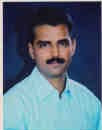Module-1 ( Use my YouTube Channel for explanation) CHIDANAND S KUSUR
Explain the "Structure of Computer" with neat block diagram. [2 + 3 + 5 =10 Marks]
Tips:
Write What is computer? ...You get 2 marks
Draw diagram: 3 marks
Input Unit
System Unit : Memory Unit + [ALU + CU]
Output Unit
Explanation of All Units: 5 marks
List of input devices with explanation in brief about each.
List of output devices with explanation in brief about each.
Generations of Computers
Types of Computers
What are C tokens? List and explain all in brief. (2 m + 1 m + 6 m = 9 marks)
What are C tokens? 2 marks
List: 1 mark
Keywords
Identifiers
Constants
Strings
Operators
Special Symbols
Explain all the above 6 : 6 marks
What are formatted I/O functions? List and discuss with syntax and examples.
(2 m + 3 m + 3 m = 8 m)
What are formatted I/O functions? 2 marks
scanf() : Explanation, Syntax, Examples (3 m)
printf() : Explanation, Syntax, Examples (3 m)
What are identifiers? Write rules for defining identifiers with valid and invalid examples for each rule.
Explain "Structure of C Program" with programming example.
[Documentation Part]
[Preprocessor Part]
[Global Part]
int main()
{
declaration part;
executable part;
return (0);
}
[User defined function]
Explain all the above parts with examples.
Give one programming example that covers all the parts.
Write C programs for following
To calculate simple interest
si=(p*t*r)/100;
input: p, t, r
output: si
To find area and perimeter of rectangle.
area=(l*b)
p=2*(l+b)
To find area and circumference of a circle
area=3.142*r*r
cir=2*3.142*r
To find area of triangle by reading breadth and height
area=0.5*breadth*height
To find area of triangle by reading three sides of it.
s=(a+b+c)/2
area=sqrt((s-a)*(s-b)*(s-c))
Module -2
Discuss the following decision making or selection or branching or conditional statements with syntax, flowchart and examples.
simple if
if else
nested if
else if ladder (cascaded if)
switch
Note:
Explain all the above with explanation (1 mark) syntax (2 marks) flowchart (2 marks) Examples (2 marks) for all
Discuss following loop statements with syntax , flowchart and examples.
while
do while
for
Write differences between while and do while
Write differences between break and continue statements.
Write C programs for following
Largest of three numbers
To check for leap year or not
To check for PALINDROME
To check for PRIME number
To find factorial of N
To find GCD and LCM of two numbers
Module 3
What is 1D array? Discuss its declaration and initialization with syntax and examples.
What is 2D array? Discuss its declaration and initialization with syntax and examples.
Module 4
Discuss the three elements of user defined function with syntax and examples.
What are actual and formal parameters?Give example.
Discuss 4 categories of function with programming examples.
Write difference between call by value and call by reference
What is recursive function?Give example.
Module 5
What is structure?Discuss defining structure and structure variables with syntax and examples.
What array of structure?Give programming example.
What is nested structure?Give example.
What is pointer?Discuss its declaration and syntax with examples.
What is dynamic memory allocation?Give programming example.
Discuss malloc, calloc, realloc, free with examples.
Write C program to swap two values using pointers.
Write C program to read and display N students information using array of structure.
What are preprocessors?Discuss three types with examples.
Answer:
Preprocessors are the pre processing tools.
These will be executed before the COMPILATION of C program.
There are helpful to add HEADER files, define SYMBOLIC constants , add EXTERNAL C files and to write compatible C programs.
Types of Preprocesors:
1. Macro substitution directives.
There are helpful to define symbolic constants.
Examples:
#define PI 3.142
# define MAX 100
# define MIN 0
# define N 50
# define SIZE 100
2. File inclusion directives.
There are helpful to add header files in C programs. So that, we can access the contents of these header files. Although, helps to add other external C files. So that, we can access the sub programs (user defined functions) to do specific task in current program.
Examples:
# include<stdio.h>
#include<math.h>
#include "string.h"
#include "alloc.h"
#include "d:\\demo\\p1.c"
3. Compiler control directives.
There are helpful to write portable C programs. i.e. helps to run the same C program on different hardware platform.
Example:
#if (MACHINE==HCL)
#define file "hcl.h"
elif (MACHINE==WIPRO)
#define file "wipro.h"
elif (MACHINE==DELL)
#define file "dell.h"
endif
#include file
All the best!
Put faith on you....This time you can.....
All the best
Write more in exam
Underline important points.
Practice programs, if you wont get in exam, write as examples.
Explanation Syntax and Examples ....compulsory for all questions
All the best.....
NOTE: SEND FEEDBACK
WRITE COMMENTS
WATCH MY YOUTUBE CHANNEL CHIDANAND S KUSUR AND SUBSCRIBE
9739762682
cs.kusur@gmail.com
